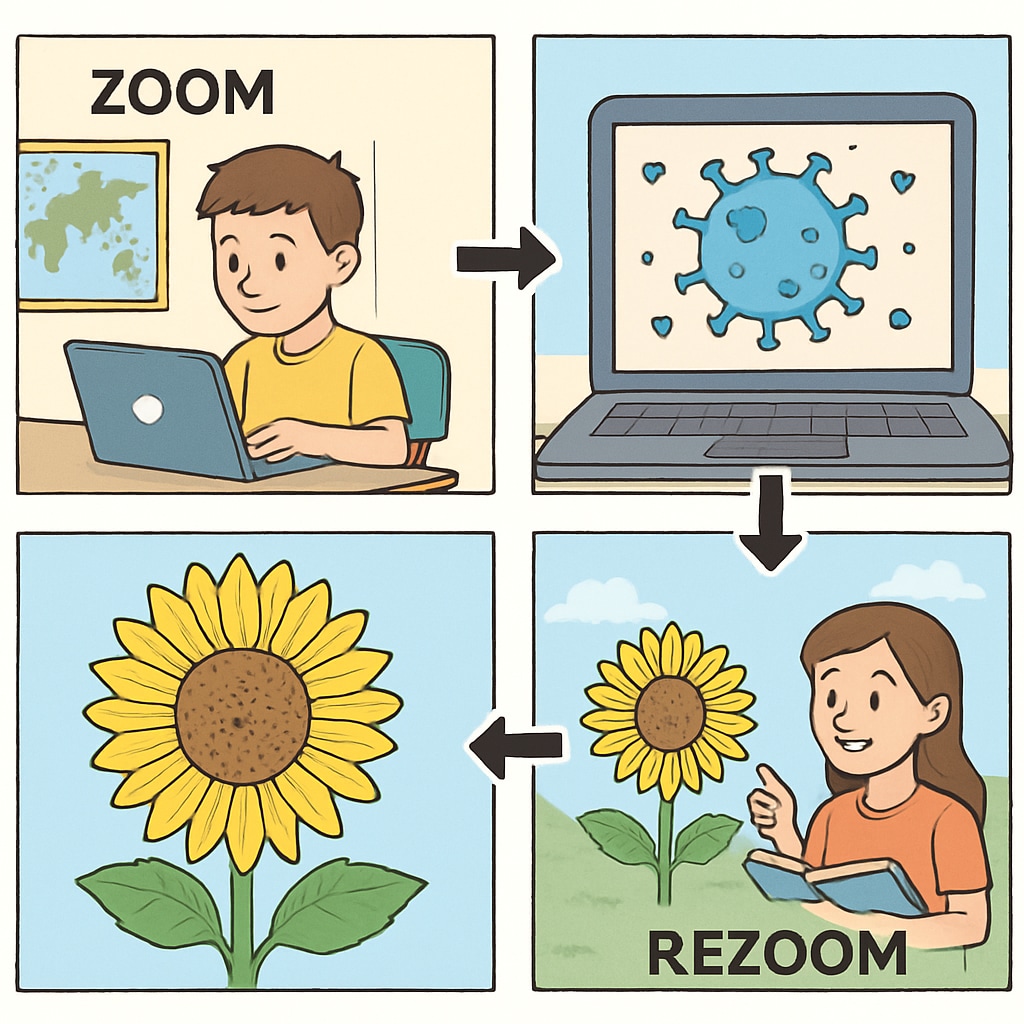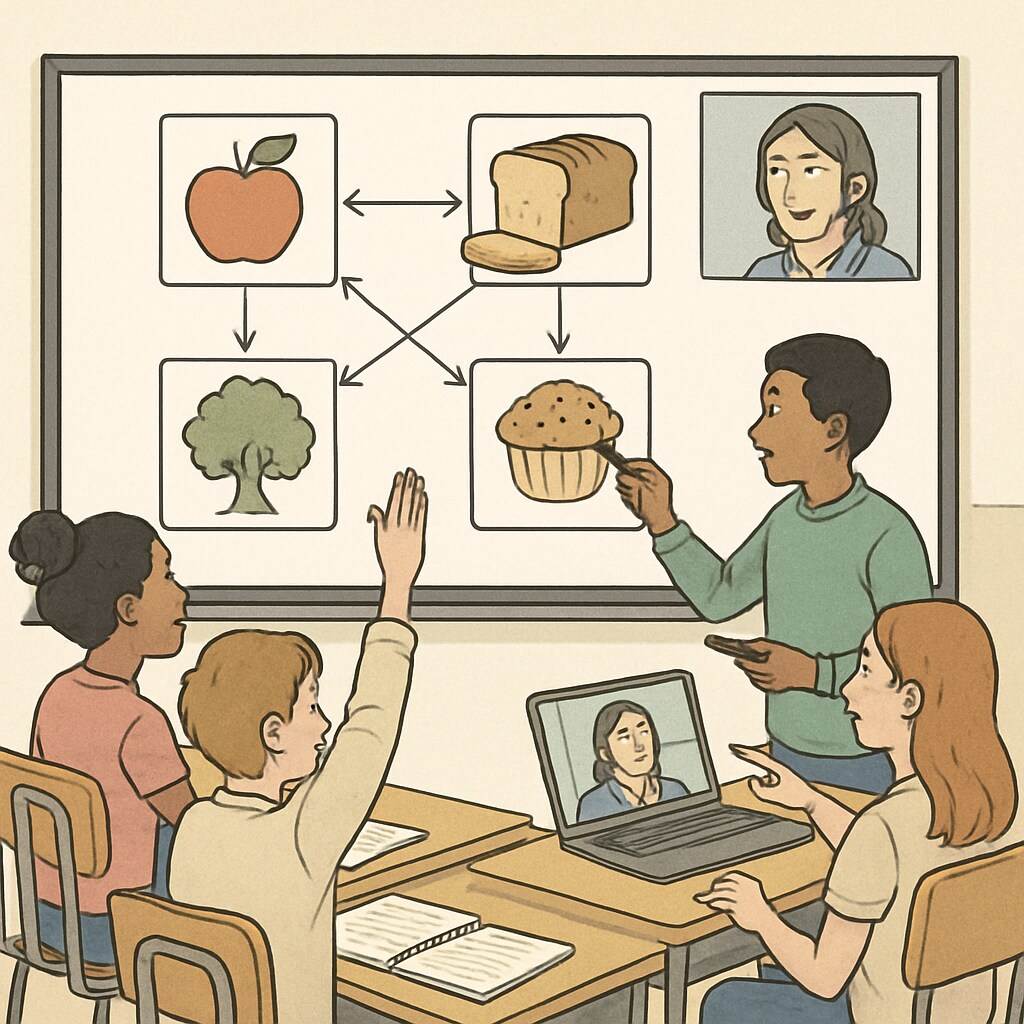Zoom and ReZoom teaching activities are gaining popularity as innovative tools to enhance K12 classroom engagement. These visual thinking strategies encourage students to sharpen their observation skills, develop reasoning abilities, and build critical thinking. By incorporating these activities, educators can create dynamic, interactive lessons that stimulate curiosity and foster deeper understanding. This article explores the value of Zoom and ReZoom in education, offers practical strategies for implementation, and provides guidance on accessing resources to support these activities.
Understanding Zoom and ReZoom Teaching Activities
Zoom and ReZoom are educational tools based on visual storytelling and sequencing. The activities typically involve a series of images that are interconnected but shown in a zoomed-in or zoomed-out format. Zoom focuses on diving deeper into the details of an image, while ReZoom emphasizes exploring the broader context by zooming outward. These tools are derived from the books “Zoom” and “ReZoom” by Istvan Banyai, which challenge readers to think critically about perspective and interconnectedness.
For example, in a Zoom activity, students might examine a close-up image of a leaf and then analyze how it fits into the larger ecosystem. Similarly, ReZoom prompts learners to start with a macro perspective, such as an aerial view of a city, and gradually uncover specific elements like buildings or parks. These activities encourage observation, inference, and collaboration, making them ideal for interdisciplinary lessons.

Benefits of Using Zoom and ReZoom in K12 Education
Integrating Zoom and ReZoom activities into K12 classrooms offers several advantages:
- Enhanced Observation Skills: Students learn to pay attention to detail and identify patterns within images.
- Critical Thinking Development: Activities require students to make connections and reason logically about relationships between images.
- Encourages Collaboration: Group discussions and shared problem-solving foster teamwork and communication skills.
- Supports Multidisciplinary Learning: These activities can be adapted for subjects like science, art, geography, and social studies.
According to Visual Thinking on Wikipedia, activities like Zoom and ReZoom are particularly effective for engaging visual learners and helping students process complex concepts through imagery. Educators often find these tools useful for introducing abstract ideas in a tangible way.
Practical Strategies for Implementing Zoom and ReZoom Activities
To successfully implement Zoom and ReZoom activities, educators can follow these practical steps:
- Select Appropriate Materials: Choose sequences of images that align with lesson objectives and challenge students to explore details or broader contexts.
- Create Clear Instructions: Explain the activity’s goals and provide examples to ensure students understand how to analyze the images.
- Encourage Group Interaction: Divide students into small groups to discuss their observations and collaborate on solutions.
- Integrate Technology: Utilize tools like interactive whiteboards or digital platforms to display images and facilitate discussions.
- Reflect and Assess: After the activity, encourage students to share their insights and evaluate their reasoning processes.
Additionally, educators can access resources such as lesson plans and image sets from online platforms or professional development workshops. For example, Education on Britannica provides insights into innovative teaching strategies that align with these activities.

Finding Resources and Answers for Zoom and ReZoom Activities
Teachers looking for answer guides and additional resources can explore these options:
- Online Educational Platforms: Websites like Teachers Pay Teachers offer ready-made Zoom and ReZoom activity sets.
- Professional Communities: Join educator forums or social media groups to exchange ideas and materials.
- Library and Bookstores: Obtain copies of “Zoom” and “ReZoom” by Istvan Banyai for direct inspiration.
- Customized Resources: Create your own sequences using thematic images related to your curriculum.
By exploring these avenues, educators can tailor Zoom and ReZoom activities to their specific classroom needs. Incorporating these tools effectively not only enriches learning experiences but also empowers students to think critically and creatively.
In conclusion, Zoom and ReZoom teaching activities offer a unique approach to fostering critical skills in K12 education. By integrating these tools thoughtfully, teachers can create engaging, interdisciplinary lessons that inspire curiosity and deeper understanding. Whether through visual storytelling, observation tasks, or collaborative discussions, Zoom and ReZoom are powerful assets for modern classrooms.


